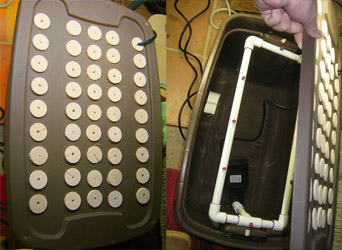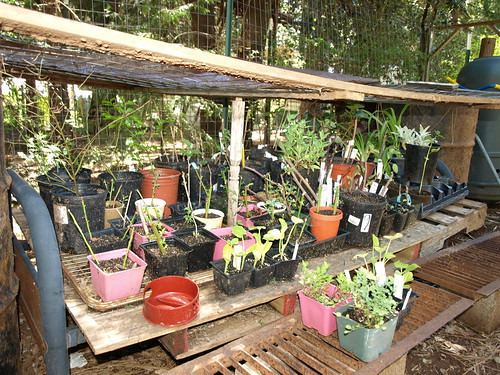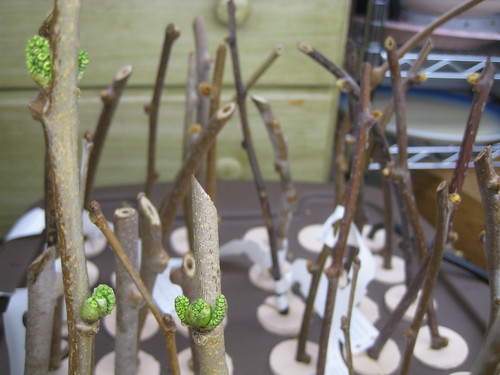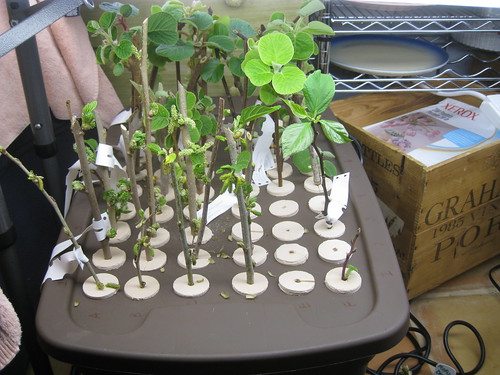 Michael Pollan, in the documentary film The Botany of Desire (perhaps also in the book?), calls cannabis growers “the best gardeners of my generation.” Indeed, when I set out to research building a DIY cloning system to populate my food forest, almost all of the plans came from websites, YouTube videos, and bulletin boards devoted to marijuana cultivation. Using some of these examples, over the winter I built this cloner, using plastic storage bins, some pvc pipe, tiny sprinkler heads, a bit of foam, and a fountain pump.
Michael Pollan, in the documentary film The Botany of Desire (perhaps also in the book?), calls cannabis growers “the best gardeners of my generation.” Indeed, when I set out to research building a DIY cloning system to populate my food forest, almost all of the plans came from websites, YouTube videos, and bulletin boards devoted to marijuana cultivation. Using some of these examples, over the winter I built this cloner, using plastic storage bins, some pvc pipe, tiny sprinkler heads, a bit of foam, and a fountain pump.
I set the cloner up under some fluorescent lights in a warm room, and as I gathered cuttings, I stuck them in – mostly assorted mulberry and kiwi varieties, which are candidates for the large canopy and vining niches in the food forest. After a time, most of the cuttings developed vigorous leaves, and some showed good root development. Some did nothing at all, and all the while the system hummed along. I eventually put the pump on a timer – 15 minutes off, 15 minutes on – ’round the clock. This seemed to keep the cuttings moist enough.
It remains to be seen whether the plants will survive – they have since been transplanted into pots and are resting in the nursery area of the garden, off the ground and in shade of a giant oak tree. As with all propagation, or at least all of the propagation I’ve ever tried, some of the cuttings rotted, or failed to thrive in other ways. If I had it to do all over again, I might have simply stuck the cuttings in moist peat/perlite in the shade, and let them do their thing with available light and rain – I’ve had lots of success using that dead simple method on other plants, notably blueberries, gooseberries, currants, elderberries, and aronia, some of which are visible below.
 Though I’m not convinced that the cloner yielded better results than more traditional methods, its construction scratched a maker itch that I have, and so I’m glad I tried it. I’m going to give it another shot using some local cuttings, and will perhaps set up an A/B scenario to try to better understand whether there’s any benefit in using such a system. Gardening should be experimental!
Though I’m not convinced that the cloner yielded better results than more traditional methods, its construction scratched a maker itch that I have, and so I’m glad I tried it. I’m going to give it another shot using some local cuttings, and will perhaps set up an A/B scenario to try to better understand whether there’s any benefit in using such a system. Gardening should be experimental!



